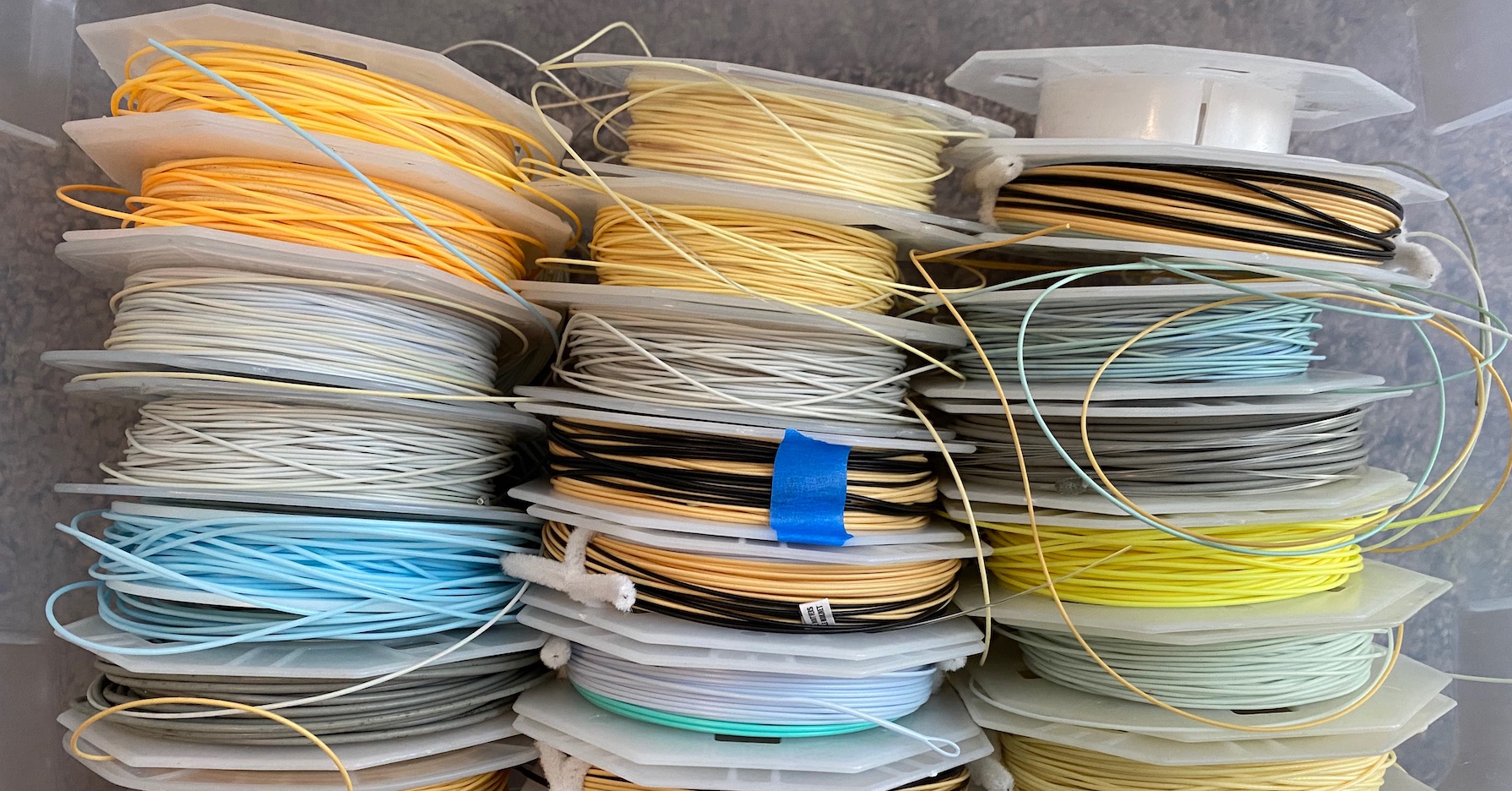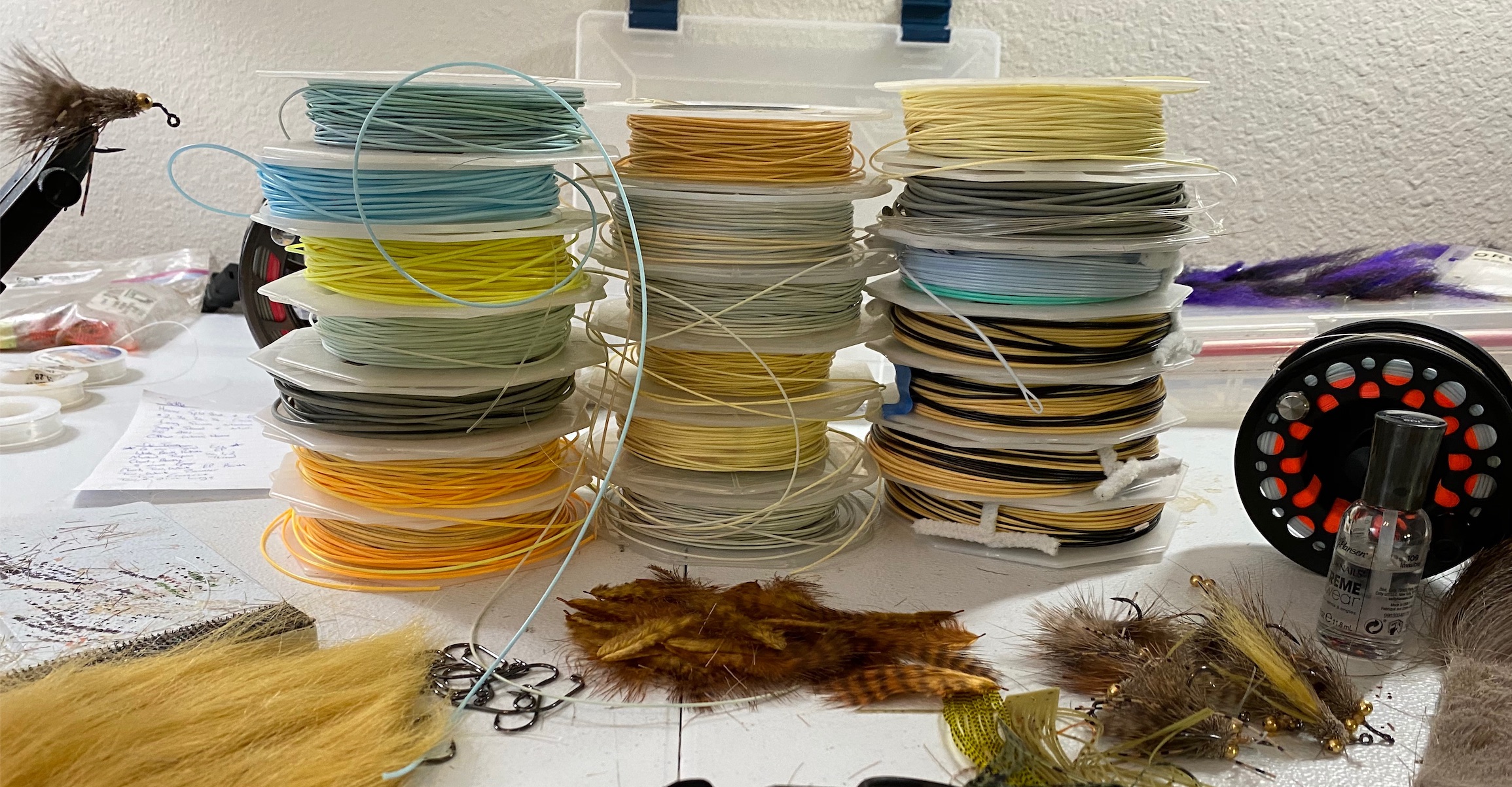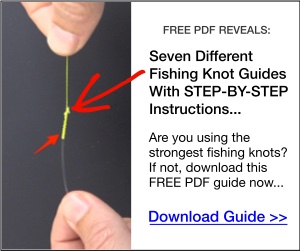Introduction To Saltwater Fly Fishing Lines For Beginners
- By: Luke Simonds
- on
- Found In: Fishing Tips, Fly Fishing Tips, Weekly Newsletter: 12-20-20

Fly fishing lines can be especially complex and intimidating to the beginner who is just getting into fly fishing. The amount of options can be overwhelming when walking into the fly shop given all the different boxes labeled redfish, bonefish, saltwater, big game, etc.
So we reached out to an inshore fishing guide (Capt. Ethan Kiburz), who specializes in fly fishing to help shine some light into this subject.
Here’s an excellent article that he put together to help you get a solid understanding of fly fishing lines that can be good for saltwater fishermen:
From Capt. Ethan Kiburz in Tampa, FL
I’m here today to help break down a lot of the confusion when picking out a line for targeting snook, redfish and trout for those of us who love inshore fishing.
The most important part of the equation is understanding how the fly rod and line work together to deliver the fly to its destination. Imagine a fly rod as a spring designed to be matched with a line that falls in a certain range of weight. Too much weight and it could fumble and seemingly collapse under the load and too little could cause the opposite where the rod feels too quick and unable to load which results in a match that doesn’t quite feel right.
In saltwater fly fishing, all the lines we’re here to talk about are all going to be “Weight-Forward” fly lines. This means that the line weight is forward on the line since the thicker part of the line is closest to the leader and fly. These lines are a necessity in saltwater fly fishing because they help “shoot” or “carry” the fly longer distances with less effort.
When we pick out a line we want to match it with the rod weight we are fishing but the type of line we pick is often dictated by the fishing we are going to do but 90% of the time, we want to match the line weight to the weight specified on the rod.
For inshore fisherman targeting redfish, seatrout, and snook, most anglers fish with a 7 through 9 weight. The conditions and where we are going to be fishing help us choose the right tool for the job. Without a doubt an 8 weight is the most popular with its versatility but on a windy day, fishing around structure, or using a heavier/larger fly, a 9 weight would be a better choice. More experienced fly fishermen may choose to pick up the 7 weight or even a 6 when given the right conditions to make things more sporty.
There are so many different manufacturers of fly lines out there today, and it’s pretty easy to pick out a line when you know what you’re looking for.
The top 3 things to consider are:
1. Depth Coverage
The depth of the water you’re fishing is the most important factor behind picking out a line. On the box the line comes in, there is a classification of what the line is designed to do and it is always an abbreviation. Here’s a quick list of the variations:
- F-Floating
- F/I-Floating Intermediate
- I-Intermediate
- S-Sinking
Note: The sink rates are normally specified on the back of the box.
Floating Lines:
When we are fly fishing on the flats in Tampa bay for snook, redfish, and spotted sea trout, the water rarely exceeds 2-3 foot when we are sight fishing, so a floating line would be a perfect choice. A floating line also allows us to pick up and recast because of its minimal resistance on the surface and if we need to get our fly on the bottom, it won’t be a problem in the shallow water.
Intermediate-Sink tip Lines:
Under a heavy current or in the surf is where these lines come into play. Beach snook fishing is a perfect place for this in the summer months where the oncoming waves would pull a floating line back to shore and a line that sinks would drop below the turbulence.
Sink Lines:
Offshore fishing would be the only place in the Tampa bay area for these lines.
2. Fly Line Material
All lines have a core and an outer coating and the material of the core makes a difference in memory retention especially in cooler temperatures. Fly lines with a braided core perform better in saltwater not only because they don’t retain as much memory but also due to the lack of stretch.
3. Fly Line Taper
Line tapers are what we see sometimes specified as “redfish” or “bonefish” lines and it’s referring to the length of the belly/head/weight. Everyone’s casting style is different but generally fast action fly rods demand a heavier line to perform appropriately, and slower action rods the opposite. By looking at the back of the box, the line has a breakdown of the front taper, belly, rear taper, and running line and we can then make an assessment on whether that line may work for our rod.

Conclusion
The most important thing about this whole equation is to remember how the fly rod and line work together to deliver the fly and a lot of this is trial by fire and from experience using these lines for inshore saltwater fishing.
Use this as a guide for understanding the key factors when picking out your next line at your local fly shop, and don’t be afraid to ask the guys behind the counter for some help. Get out and enjoy our beautiful waterways!
About the Author:
Capt. Ethan Kiburz was kind enough to send in this helpful article about fly fishing lines. You can learn more about him from his website: https://captainethankiburz.com
Want More Fly Fishing Tips?
If you’d like to see more articles and videos about saltwater fly fishing, please leave a comment below to let us know what topic(s) you’d like us to cover.
Tight Lines!
Related categories:
STOP WASTING TIME ON THE WATER!
Do what the “SMART ANGLERS” are doing and join the Insider Club.
Here’s what you’ll receive today when you join:
- Weekly fishing reports and TRENDS revealing exactly where you should fish every trip
- Weekly “spot dissection” videos that walk you through all the best spots in your area
- Exclusive fishing tips from the PROS you can’t find anywhere else
- Everything you need to start catching fish more consistently (regardless if you fish out of a boat, kayak, or land).









Glad to see some flyfishing on Saltstrong,
Thanks
I’m a “self taught” freshwater fly guy (live by a river in tx), and boy was it a wake up call to do it in salt water. The most fun ever! Stripping line in with a redfish on was incredible!
So I’ve taught myself some bad habits which made casting and placing the streamer difficult. I think the number 1 problem is using my wrist when casting. Number 2 is line speed, or lack of. I must learn the haul/double haul to load the rod and keep a tight loop. The strong wind that day ate my lunch!
Would love to learn how to target fish when wading. The trip I took, we were.poling a skiff through the grass.
For now I have a decent 8 weight and I need practice, so I’ll keep my eyes peeled for more fly fishing articles!
Thanks for making time to post the topic recommendation James! We’ll add this to our list of fly fishing topics to address.
Luke – thank you!! As discussed during the last Inner Circle, I’d love to see more fly fishing instruction. I’m the newest of newbies to this “obsession.” This was fantastic.
So glad to see that you enjoyed this article! More coming soon.
Tips how to cast a heavier saltwater fly. And a discussion on leaders such as tapered vs flat line leaders.
We’ll be sure to add this to our list of fly fishing topics to cover.
I would like to know how to pick out a fly for saltwater fishing. What are the best conditions for fishing with a fly rod inshore? Where do most fly fishermen concentrate their efforts?
That was like a dream to be a fly fishing coach
Fly fishing sure is a lot of fun!
it is
Very compact and very informative. Good article
Thanks for making time to leave the nice comment Pete!